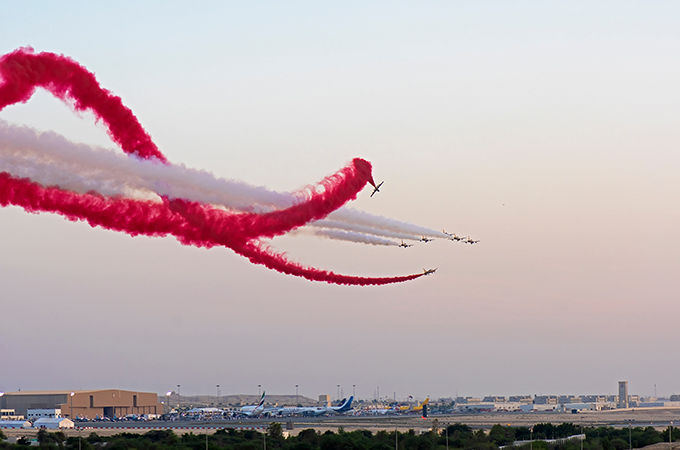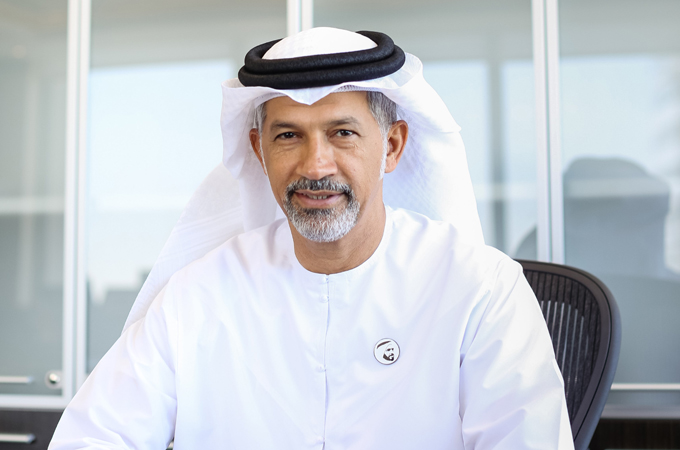Autumn 2015
Gulfstream Aerospace Corporation of the US will be present at the upcoming Dubai Airshow in the UAE, showing off its fleet of business jets as it looks to further boost its profile across the region.
The jet manufacturer was also one of the major names at Africa’s first ever business aviation show, which was held at the Mohammed V International airport in Casablanca, Morocco, in September.
Hosting some of the biggest names in business aviation and held by the Middle East and North Africa Business Aviation Association (MEBAA), the two-day MEBAA Show Morocco was inaugurated by Mohamed Najib Boulif, Minister Delegate to the Minister of Equipment, Transport and Logistics Aziz Rebbah, with Ali Al Naqbi, MEBAA’s Founding Chairman.
Gulfstream exhibited its flagship G650 jet, which proved a crowd-puller at the event.
Trevor Esling, Gulfstream’s Regional Senior Vice President for Europe, the Middle East and North Africa (EMEA) said that Morocco, which is a hub for regional business aviation, offers good prospects. “Business in Morocco is good and demonstrates lots of potential for the future.”
At the Dubai event, Gulfstream will have the G280, G450, G550 and G650ER on static display from November 8 to 12, 2015.
GREEN GOALS
Meanwhile, green-conscious high flyers will be pleased to know that two of Gulfstream’s sustainability initiatives have been recognised in Aviation Climate Solutions, a collection of 100 examples highlighting how the aviation industry is collaborating to cut carbon dioxide emissions and help reduce the industry’s impact on climate change.
The publication includes Gulfstream’s Green Teams and its recent renewable fuels agreement with World Fuel Services Inc.
“We are committed to the business aviation industry’s sustainability goals for carbon-neutral growth, fuel-efficiency and carbon dioxide emissions reductions, and we are breaking new ground with the industry’s first agreement to obtain renewable fuels for use on a day-to-day basis,” says Gulfstream President Mark Burns. “Our sustainability strategy also focuses on protecting the communities where our employees live and work, and to that end, we empower them to act as stewards of the environment and champions of Gulfstream’s sustainability efforts.”
Gulfstream’s Green Teams were established in 2012 to address sustainability efforts at strategic and tactical levels. The teams help implement Gulfstream’s sustainability strategy across operations, which includes reducing energy use, solid and hazardous waste, greenhouse gas emissions and water consumption. These employee-driven groups that now involve more than 500 individuals are also encouraged to spread awareness of Gulfstream’s sustainability goals throughout the company.
In May this year, Gulfstream and its fuel supplier World Fuel Services finalised a three-year agreement that provides Gulfstream with a consistent supply of renewable fuels for its daily flight operations in Savannah. The fuel is a 30/70 blend of low-carbon, drop-in renewable fuel and Jet-A. It provides the same performance as conventional, petroleum-based jet fuel and requires no changes to factory-standard engines or aircraft. Each gallon of renewable fuel burned is expected to achieve a more-than-50 per cent reduction in greenhouse gas emissions, relative to petroleum-based jet fuel, on a lifecycle basis.
“Aviation plays a vital role in the world economy, providing connectivity for people and business,” says Michael Gill, executive director of the Air Transport Action Group (ATAG), the cross-industry association that published the report. “Our industry has also taken a lead in climate action, putting in place a comprehensive framework and goals to reduce emissions from air transport. The Aviation Climate Solutions are a set of case studies showing how different parts of the industry all over the world, including Gulfstream, are working together to reduce our climate impact.”
Aviation Climate Solutions was released at the Global Sustainable Aviation Summit in Geneva in September, alongside an open letter from industry chief executives that reaffirms the industry’s commitment to climate action and calls on governments to support it with the development of a global market-based measure for aviation emissions, improved efficiency in air traffic management and accelerating research for alternative fuels and new technology.
“Gulfstream is honoured to be recognised by ATAG,” Burns says. “We continue to build on these efforts and look for new ways to integrate sustainability into our business.”
SOFTWARE UPGRADE
Among other developments, an avionics software upgrade resulting in improved aircraft performance is now available for the G280.
The new PlaneView280 software, offered in conjunction with supplier Rockwell Collins, results in slower approach speeds, shorter landing distances and enhanced flight management system performance.
“The G280 was already a top-performing aircraft in its class,” says Dan Nale, Senior Vice President, Programs, Engineering and Test. “With this upgrade, the aircraft’s performance is even better. Our customers will appreciate the increased functionality and utility, the operational improvements, the enhanced display layout and the improved situational awareness.”
The upgrade reduces G280 approach speeds by up to 9 knots. The landing distance with the new software is 2,380 ft (725 m), a decrease of 270 ft (82 m).
Flight management system performance is enhanced as well, with improvements to basic time and fuel predictions, optimum and maximum altitude and best rate-of-climb speed. New performance features are also included with the upgrade, allowing for automatic calculations for long-range cruise, maximum cruise and maximum endurance cruise speeds.
The software incorporates human factors studies and pilot input to enhance the flight deck interface and optimise the display format. It also clears the way for operators to activate a number of optional features, including synthetic vision, ADS-B OUT (DO-260B) and ATN-B1 (Link 2000+).
New G280 aircraft will equipped with the upgraded software.
TEST FLIGHTS
Meanwhile, Gulfstream’s G500 has completed five test flights since it first took to the skies in May this year. During more than 15 hours of flying, the aircraft achieved a top speed of Mach 0.80 and a maximum altitude of 38,500 ft (11,735 m). The aircraft’s longest flight was more than four hours.
“The first five flights exceeded our expectations,” says Nale. “And they demonstrated that our testing facilities on the ground are having very real benefits in the air, allowing us to identify and address issues before they’re ever seen in flight.”
Gulfstream announced the G500 and G600 family of aircraft in October last year. Programmes for both aircraft are progressing well. As the first G500 flight-test article undergoes modification, two more are preparing for flight and a fourth is in production. Additionally, the first G600 flight-test aircraft has begun the initial stages of production.
Together, the two programmes have completed more than 36,000 hours of lab testing, and both the G600 integration test facility (ITF) and the G600 Iron Bird are now operational. The engines for the G500 and G600, the PW814GA and the PW815GA, respectively, were certified by Transport Canada in February.
The G500 and G600 offer an optimised combination of speed, wide-cabin comfort and efficiency, providing best-in-class performance with advanced safety features.
The G500 has a range of 5,000 nautical miles (9,260 km) at Mach 0.85 or 3,800 nm (7,038 km) at Mach 0.90, while the G600 can carry passengers 6,200 nm (11,482 km) at Mach 0.85 and 4,800 nm (8,890 km) at Mach 0.90. The maximum operating speed for both aircraft is Mach 0.925, the same maximum speed as Gulfstream’s G650 and G650ER.
The G500 and G600 also include Gulfstream’s all-new Symmetry Flight Deck, the most advanced, stylish, comfortable and intuitive flight deck in business aviation. The cutting-edge technology comes in the form of active control sidesticks (ACSs), integrated touchscreen controllers, next-generation enhanced vision system (EVS III), and Honeywell Primus Epic avionics.
The G500 and G600 cabins maximise comfort, with an industry-leading cabin altitude of 4,850 ft (1,578 m) at FL510 and 100 per cent fresh air that boosts mental alertness and productivity while reducing fatigue.
Gulfstream anticipates certification of the G500 in 2017, with entry into service in 2018. The G600 certification is slated to follow in 2018, with entry into service in 2019.
A wholly owned subsidiary of General Dynamics Gulfstream Aerospace Corporation, Gulfstream designs, develops, manufactures, markets, services and supports the world’s most technologically advanced business-jet aircraft.
Gulfstream has produced more than 2,400 aircraft for customers around the world since 1958. To meet the diverse transportation needs of the future, Gulfstream offers a comprehensive fleet of aircraft, comprising the G150, the G280, the G450, the G550, the G500, the G600, the G650 and the G650ER. Gulfstream also offers aircraft ownership services via Gulfstream Pre-Owned Aircraft Sales. The company employs more than 16,000 people at 12 major locations.





















